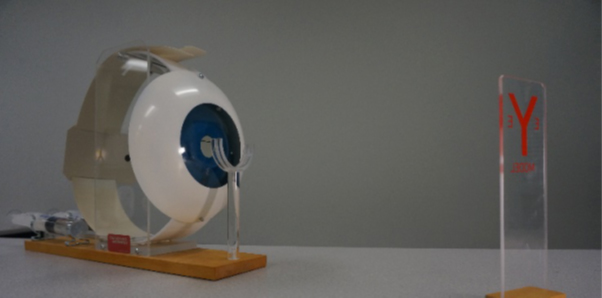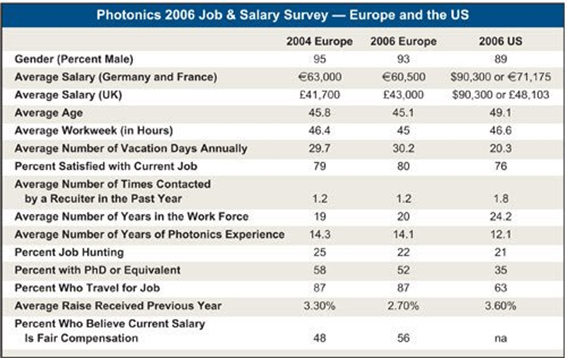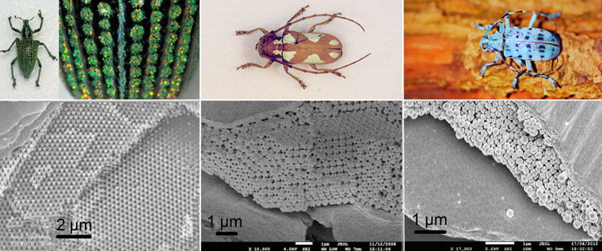Light Amplification by Stimulated Emission of Radiation or LASER invented as an extension of the maser, or “Microwave Amplification by Stimulated Emission of Radiation.” Name indicates, the maser is an amplifier that was originally used for amplifying weak radio signals from space. Laser devices or technology use light to store, transfer, or print images and text. Contemporary world is enriched with various application of LASER in wide range like surgery and weaponry etc. The coherent radiation of the laser gives it special strength. In 1960, the discovery of Laser by T. H. Maiman plays a vital role in the development of the optical technology. Recently, in 2018 Nobel Prize in Physics was awarded for the development of optical tweezers and its application to biological systems and for the development of ultra-high power, ultra-short pulse lasers.
But what is the priority in this domain!!
Last two decades, fiber laser technologies have developed to such manner that they have literally captured a huge commercial laser marketplace. Still, there is an apparently unquenchable thirst for ever greater optical power to levels where certain harmful light-matter. In the past decade or so, the industry has focused mainly on waveguide engineering to overcome many of these hurdles.
How fiber laser works?
A laser generally encompasses an optical resonator or laser cavity in which light can oscillate (e.g. between two mirrors) and an active medium(e.g. a laser crystal) within this resonator, which serves to amplify the light. Without the active medium, the oscillating light would become weaker and weaker in each resonator round trip because of some losses. The active medium requires some external supply of energy, we can entitled as pumping energy by injecting light (optical pumping) or an electric current (electrical pumping in semiconductor lasers). The principle of laser amplification is stimulated emission.
In fiber laser, the active medium is an optical fiber doped with rare-earth elements such as erbium, ytterbium, neodymium, dysprosium, praseodymium, thulium and holmium. They are associated to doped fiber amplifiers, which provide light amplification without conventional lasing action. Fiber nonlinearities, such as stimulated Raman scattering or four-wave mixing can also provide gain and thus behave as gain media for a fiber laser. Fabrication of the active medium used to perform with a focus on the more conventional chemical vapor deposition methods.
Invention & commercial availability of fiber Laser
The fiber laser has a long history almost like laser itself. After its invention in 1963 by Elias Snitzer, the fiber laser developed in almost two decades of growth before the first commercial devices available on the market in 1990. This fiber lasers used single-mode diode pumping having a few tens of milliwatts power lasing action and it was attractive for the users because of their large gains and the feasibility as single-mode continuous-wave (CW) laser source. Recent developments in fiber laser technology is very impressive and have directed to a rapid and large rise in achieved diffraction-limited beam powers from diode-pumped solid-state lasers.
In 2001,introduction of large mode area (LMA) hollow photonic crystal fibers associated with high power and high brightness diodes, continuous-wave(CW) single-transverse-mode powers from Ytterbium(Yb)-doped fiber lasers have increased from 100 W to over 20 kW. A combined beam fiber laser demonstrated power of 30 kW in 2014. Double cladding optical fiber structures have been utilized to reduce the brightness requirements of the high-power pump diodes by controlling pump propagation and absorption between the inner cladding and the core.
High-Power Fiber Lasers Revival
Since invention and evaluation of fiber lasers, it has placed down a strong track record for high-power, high-quality beams for industry and even the military. Researchers and manufacturers are pushing them to achieve beyond current limits of laser power. One of best fiber laser company, IPG Photonics started with a one-watt single-mode fiber laser in 1995 and it had reached single-mode CW output of 1 kilowatt(kW) by 2004, which was exactly requirement of Military and various industry. An impressive engineering achievement by IPG that remained significant for single-mode fiber lasers is to reach 10 kW as reported in 2009. Multimode fiber(MMF) lasers can operate at continuous power levels to 100 kW because MMF has larger cores spread the laser power through a larger volume, reducing the power density that contributes to nonlinear effects. The high beam quality of single-mode fiber lasers is attraction of this laser, it facilitates large scale users, from the researchers to military communities due to its higher powers along with good beam quality. The current status of manufactures of high-power CW Ytterbium lasers in 1 to >100 kW range and Erbium, Thulium and Raman fiber lasers in 1 to 5 kW range.

Growth in power of IPG Photonics fiber-laser Picture curtsey: IPG Photonics
Industrial Necessity: Fiber laser cutting machine and its prospects
Fiber laser use is countless, but it majorly used in the heavy manufacturing industries, includes automobile industry. 2D and 3D sheet metal cutting are completely dependent on fiber laser cutting as it is beneficial for faster production with sufficient precision and perfection. Many of the components and parts of automobile have been made through the fiber laser cutting. Equipment and machinery parts used in pharmaceuticals industry are also designed by fiber laser cutting. Fiber laser cutting machines is fruitful upon both metals and non-metals surface for cutting or drilling. In consequence, steel industry, textile industry, architecture, leather industry, furniture industry, plastic processing industries etc. are using fiber laser with no doubt.
Now a days, the storage, the micro-sd cards, the circuit boards whatever we use, the production of all these have direct relation with fiber laser cutting. Fiber laser cutting is also working efficiently in complicated designs with enough detailing and delicacy with smooth finish. Therefore, it is widely used in textile, leather and jewelry industry, fashionable garments, stylish accessories, decorative and fancy items, ornaments through skilful execution of fiber laser cutting work. Our electronic home appliances CD or DVD to medical stent cutting machines everything has the contribution of laser cutting behind their production.
Fiber laser cutting is efficient to work upon every kind of plastic material, such as polyester, polycarbonate, polypropylene. Actually, fiber laser allows heat very preciously and accurately which help for deliberating smooth, clean edges to the final products. With time new trends and demands are evaluating the fiber laser industry dramatically.

Picture curtsey: OSA
Military benefit: National security
High-power fiber lasers have been in military systems for defence as relatively short-range weapons, such as rockets, artillery, mortars, small boats and drones and perhaps it could be considered as most successful for security of citizen of any country.
It is very inspiring story from the U.S. Office of Naval Research that they buy half a dozen 5.5-kW industrial fiber lasers from IPG. They combine their beams incoherently by aiming them with different mirrors through a single telescope toward the same target. The fiber laser is called as Navy LaWS, for Laser Weapon System which was mounted on the USS Ponce when it was deployed to the Persian Gulf in 2014.
Still now, the most successful approach to producing weapon-grade fiber lasers has been reported as spectral beam combination, essentially a military-strength version of dense wavelength-division multiplexing. The drawback in fiber laser weapon showed that thermal blooming, air turbulence and heating of laser optics, which would make hindrance to deliver continuous powers above 100 kW beyond 5 km. The military requirement is more power and more distance.
In 2017, U.S. army delivered a 60-kW version to the Army Space and Missile Defense Systems Command in Huntsville. They are also trying to build fiber lasers emitting 60–150 kW. U.S. defence agency proposed that spectral beam combination of fiber lasers could allow 300-kW generation of laser weapons near future.
DRDO, India has made significant progress in building laser weapons capability, or Directed Energy Weapons (DEWs), as reported in recent news. DEWs are primarily used to damage or destroy enemy’s facilities, aircraft, anti-personnel weapon systems, missiles based on electronic circuitry. DRDO scientists have been working in this area for the past three to four years to develop 10-kW and 20-kW. Fiber Laser technology could place defence of any country at least 10-20 years in advance.

Laser weapon Picture curtsey: https://www.lockheedmartin.com/











